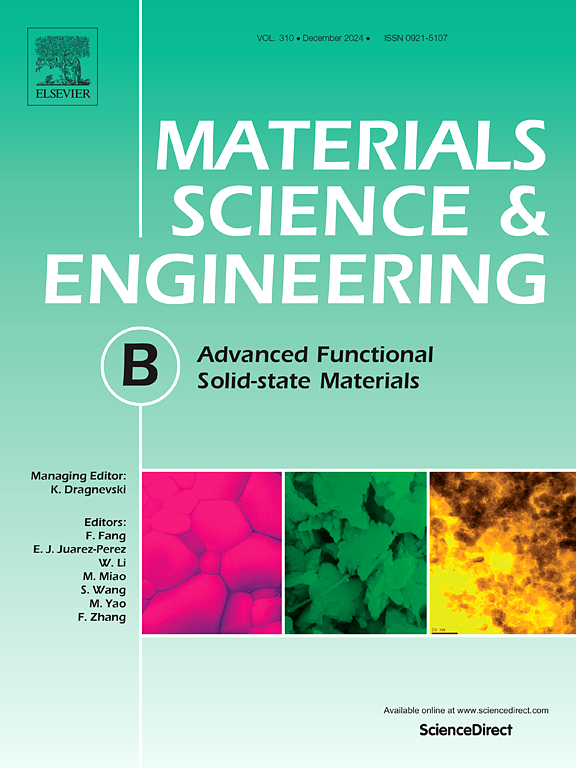Enhancing La1.2Sr0.8NiO4+δ cathode electrocatalysis for protonic ceramic fuel cells with Zn-doping
IF 3.9
3区 材料科学
Q2 MATERIALS SCIENCE, MULTIDISCIPLINARY
引用次数: 0
Abstract
Modulating B-site atomic environment in K2NiF4-type material offers a promising strategy to tailor electrocatalytic properties. Herein, Zn is incorporated into La1.2Sr0.8NiO4+δ (LSNO) to create additional oxygen vacancies, resultantly developing highly-active La1.2Sr0.8Ni0.8Zn0.2O4+δ (LSNZ) cathode. The cell NiO-BaZr0.1Ce0.7Y0.2O3-δ| BaZr0.1Ce0.7Y0.2O3-δ|LSNZ achieves an outstanding power density of 1330 mW cm−2 with the polarization resistance of 0.081 Ω cm2 at 700 °C, significantly surpassing not only LSNO-based cell but also previously reported Ln2NiO4-based cathodes. This remarkable performance is attributed to the enhanced oxygen migration and protonation of LSNZ, as confirmed by electrical conductivity relaxation measurements, which facilitate faster electrode reaction kinetics. Combining the superior power output, excellent polarization properties, and robust durability, LSNZ emerges as a highly competitive cathode candidate for protonic ceramic fuel cells. This work demonstrates the effectiveness of Zn-doping in modifying B-site atomic environment of K2NiF4-related structures to design high-performance electrode materials, offering valuable insights for advancing electrocatalytic material design in related fields.
求助全文
约1分钟内获得全文
求助全文
来源期刊

Materials Science and Engineering: B
工程技术-材料科学:综合
CiteScore
5.60
自引率
2.80%
发文量
481
审稿时长
3.5 months
期刊介绍:
The journal provides an international medium for the publication of theoretical and experimental studies and reviews related to the electronic, electrochemical, ionic, magnetic, optical, and biosensing properties of solid state materials in bulk, thin film and particulate forms. Papers dealing with synthesis, processing, characterization, structure, physical properties and computational aspects of nano-crystalline, crystalline, amorphous and glassy forms of ceramics, semiconductors, layered insertion compounds, low-dimensional compounds and systems, fast-ion conductors, polymers and dielectrics are viewed as suitable for publication. Articles focused on nano-structured aspects of these advanced solid-state materials will also be considered suitable.
 求助内容:
求助内容: 应助结果提醒方式:
应助结果提醒方式:


